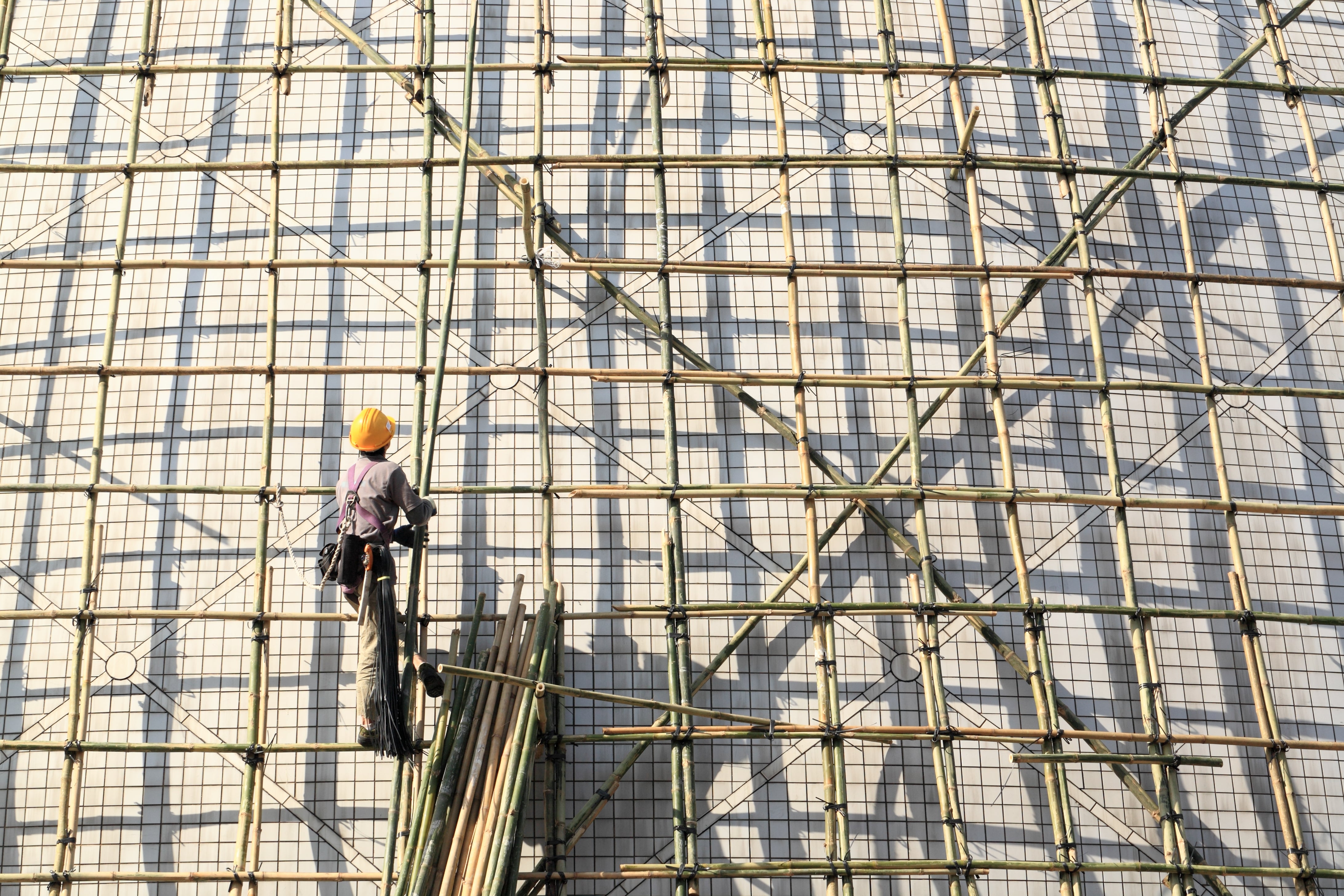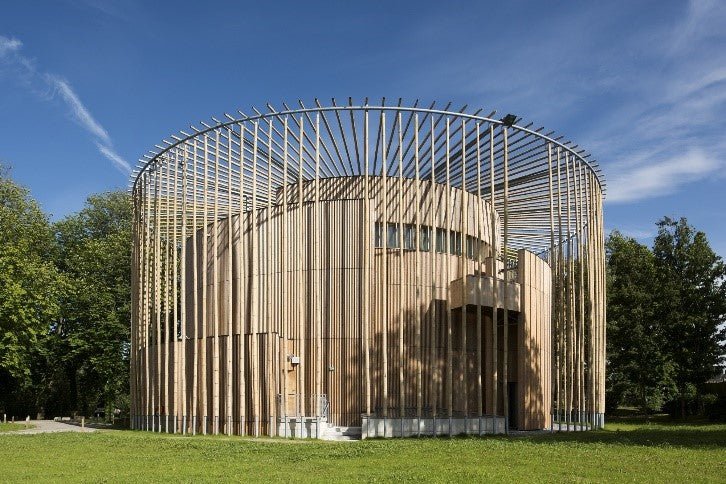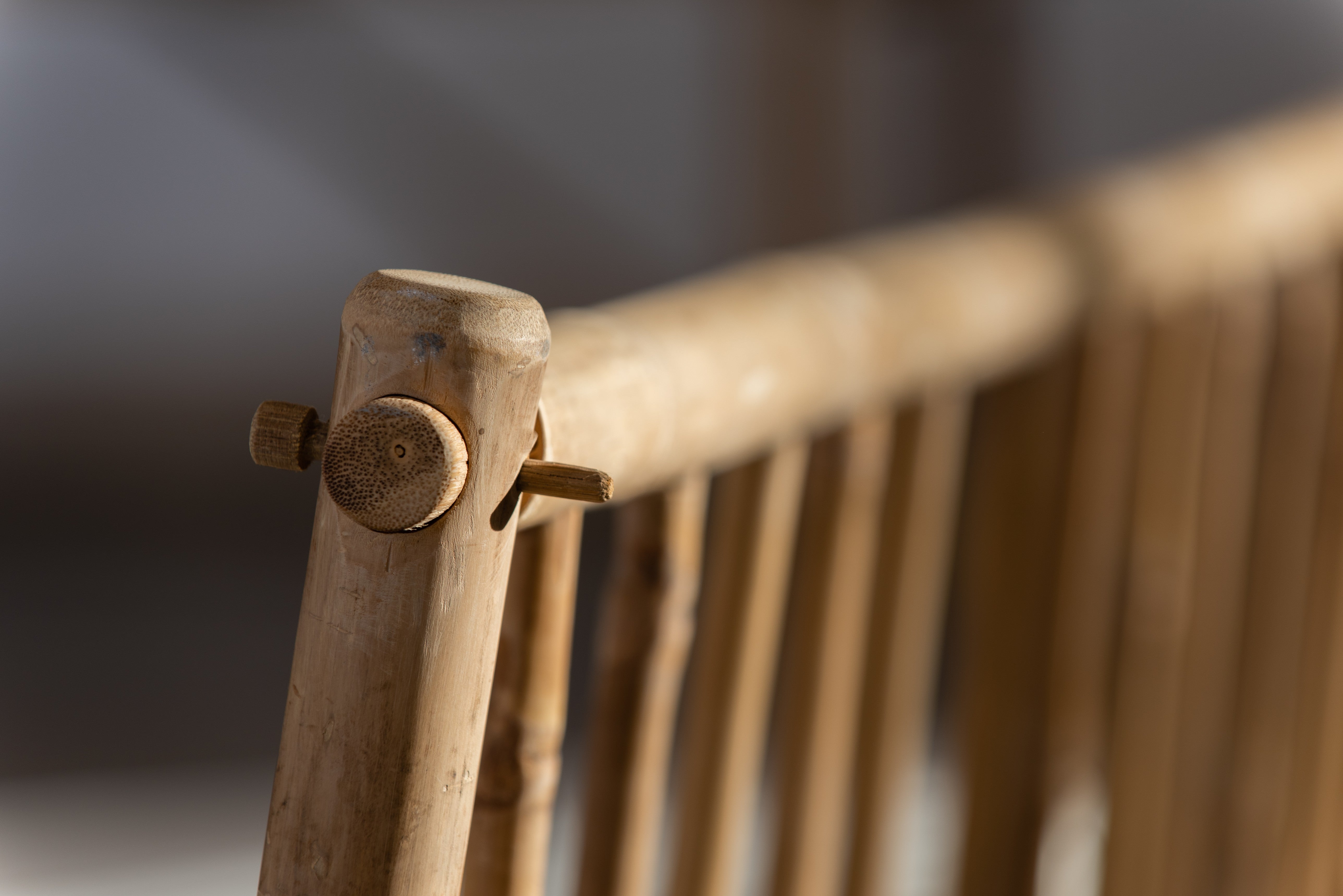
Bamboo scaffolding: An ancient technique for modern construction
At NorthbyNorth we are proud that we use one of the most sustainable natural materials - bamboo. Not only do we appreciate its aesthetic qualities, but bamboo is also extremely strong and we are constantly fascinated by the different possibilities it offers. We just love bamboo!!
When you think about the different uses that bamboo has, garden furniture is the obvious option. But there is much more bamboo can be used for, from cutlery to building material. But the use of the use of bamboo scaffolding has really caught our interest. It's crazy to think that such an ancient material and technique is the method of choice for many modern construction projects in one of the world's most exciting places, Hong Kong.
At first glance, the scaffolding looks like it could be the usual metal variety, but on closer inspection it is clear that the structure is made of traditional bamboo sticks that are simply tied together. This is a traditional construction method used throughout Asia that dates back many centuries.
Benefits of bamboo scaffolding
The obvious benefit of using bamboo scaffolding poles is sustainability, it is a way to lower the carbon footprint of construction projects. It is also the world's fastest growing plant, requiring virtually no effort, making it a much cheaper alternative to steel.
Then there are the physical aspects of the material, it is extremely strong, durable and lightweight unlike steel scaffolding poles which are heavy and bulky to use. This lowers transport costs and simplifies logistics, as the lightweight bamboo takes up less space, which means fewer trucks. The lighter weight also makes it easier to set up. A bamboo scaffolding only takes a few days, while steel scaffolding can take weeks and sometimes months to set up.
In addition, bamboo scaffolding poles can last up to seven years, after which they are often used as walking boards, or if they are deemed unsafe, they can be used as firewood. Regenerating bamboo poles is an easy process as it is one of the fastest growing natural materials. In other words, bamboo scaffolding poles are part of the natural sustainable cycle.
The disadvantages of bamboo scaffolding
Obviously this type of construction is only seen in Asia as western health and safety regulations would not allow this type of structure as the bars are lashed together using nylon which is not considered 100% safe.
A Dying Profession
Bamboo scaffolding requires craftsmanship. Unfortunately, this type of scaffolding is gradually becoming less common. The skills are passed down from generation to generation and today only a small percentage of the younger generation is interested in working in this field. To revive interest, the Hong Kong Construction Industry Council offers free courses. Let's hope that this art does not die out and that modern construction companies continue to use this ancient method.
If you would like to know more about NorthbyNorth's bamboo furniture, visit our online store at www.northbynorth.com or e - email info@northbynorth.com




Leave a comment
This site is protected by reCAPTCHA and the Google Privacy Policy and Terms of Service apply.